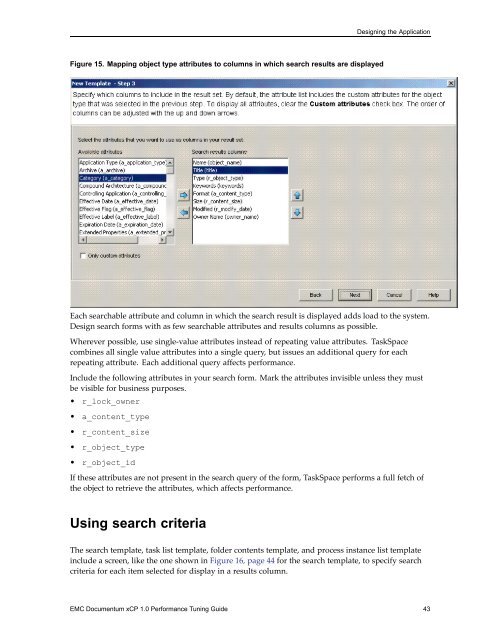Performance Tuning Guide - EMC Community Network
Performance Tuning Guide - EMC Community Network
Performance Tuning Guide - EMC Community Network
You also want an ePaper? Increase the reach of your titles
YUMPU automatically turns print PDFs into web optimized ePapers that Google loves.
Designing the Application<br />
Figure 15. Mapping object type attributes to columns in which search results are displayed<br />
Each searchable attribute and column in which the search result is displayed adds load to the system.<br />
Design search forms with as few searchable attributes and results columns as possible.<br />
Wherever possible, use single-value attributes instead of repeating value attributes. TaskSpace<br />
combines all single value attributes into a single query, but issues an additional query for each<br />
repeating attribute. Each additional query affects performance.<br />
Include the following attributes in your search form. Mark the attributes invisible unless they must<br />
be visible for business purposes.<br />
• r_lock_owner<br />
• a_content_type<br />
• r_content_size<br />
• r_object_type<br />
• r_object_id<br />
If these attributes are not present in the search query of the form, TaskSpace performs a full fetch of<br />
the object to retrieve the attributes, which affects performance.<br />
Using search criteria<br />
The search template, task list template, folder contents template, and process instance list template<br />
include a screen, like the one shown in Figure 16, page 44 for the search template, to specify search<br />
criteria for each item selected for display in a results column.<br />
<strong>EMC</strong> Documentum xCP 1.0 <strong>Performance</strong> <strong>Tuning</strong> <strong>Guide</strong> 43

















